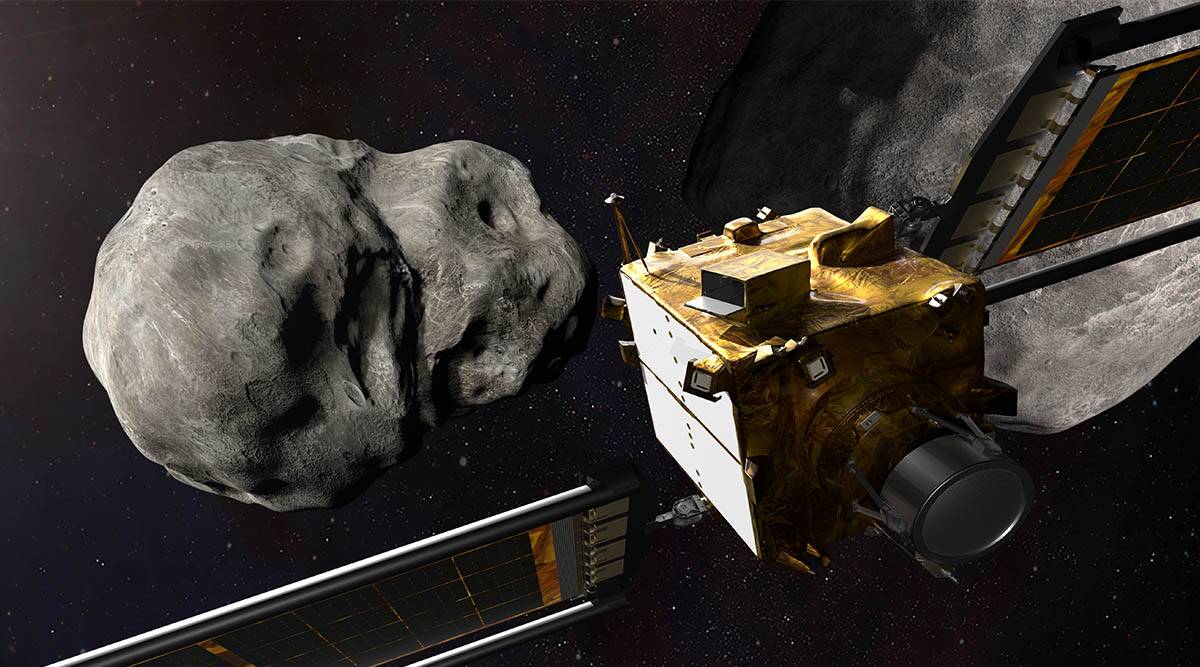 NASA's DART Mission Live: Get live updates as NASA's DART spacecraft crashes into the asteroid Dimorphos. (Illustration credit: NASA)
NASA's DART Mission Live: Get live updates as NASA's DART spacecraft crashes into the asteroid Dimorphos. (Illustration credit: NASA) Double Asteroid Redirection Test (DART) Mission Live Updates: NASA’s DART (Double Asteroid Redirection Test) spacecraft is scheduled to collide with the asteroid Dimorphos at approximately 7.14 PM EDT on September 26 (4.44 AM IST on September 27). The mission will be the first to test a “kinetic impactor” method of planetary defence, which involves changing the trajectory of asteroids that threaten Earth by crashing a high-speed spacecraft into it.
Data obtained from DART’s crash will be compared to the data from various computer simulations run by scientists to ascertain whether this kinetic impactor method will remain a viable option in case of an actual threatening asteroid. Scientists don’t yet know the exact mass of Dimorphos but it is estimated to be around five billion kilograms. The DART spacecraft weighs around 600 kilograms.
NASA’s livestream of the DART mission will start at 6 PM EDT on September 26 (3.30 AM IST on September 27. You can watch it on NASA TV, NASA’s mobile app, its YouTube channel or through the window above. You can read live updates below.


The asteroid Didymos and the small moonlet Dimorphos make up a binary asteroid system. Didymos is about 780 metres in diameter while Dimorphos is about 160 metres in diameter. Didymos is shaped like a spinning top and has a raised ridge running along its equator, which is a common shape among binary asteroids. But not much is known about Dimorphos except that it appears to be somewhat elongated.
The binary asteroid system poses no threat to Earth but it occasionally approaches relatively close to our planet. According to NASA, it passed only 0.0487 astronomical units away from our planet in 2003. One astronomical is the distance between the Sun and the Earth.
The DART spacecraft has only one instrument on board—DRACO or the Didymos Reconnaissance and Asteroid Camera for Optical navigation. Not only will this high-resolution camera capture images of Didymos and Dimorphos, but it will also be supporting DART’s autonomous guidance system that will take over about one hour before the planned collision.